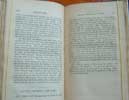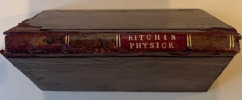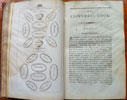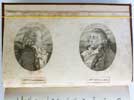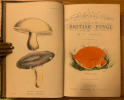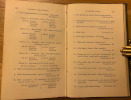TOLETANUS DE TRICLINIO,
SIVE DE MODO CONVIVANDI Apud priscos Romanos, & de conviviorum apparatu. Accedit Fulfii Usini Appendix, & Hier Mercurialis De accubitusin coena Antiquoum origine, Differtatio. (a printers device) Amstelaedami, Apud Henricum Wetstenium. (a single line) MDCLXXXIX.
1689. 12mo. 129x79mm. 1 fep. Full page Frontis of title. [1] 3-5. Printed additional engraved title. [1] 4page Lectori. 2-109. 110-111 A full page engraving with an explanation. [1] De Triclinio Appendix [1] 115-382. 383-384 Half-title. [1] 385-445 De accubitu antiquorum. 1-23 Index. 1fep. 6 leaves of plates (5 folding), and numerous full-page engravings. Clean and solid text block. A quarter re-laid light brown leather spine, 2 red labels, gilt lines with gilt devices. Marbled boards with leather tips.
- The fifth edition of DE TRICLINO; third edition of DE TINTINABULIS (but the first to include Magis' treatise on the rack). An unusual mixture of Roman Gastronomy, Bell Ringing, and Torture. Pedro Chocón, also known as Petrus Ciacconius, (1526-1581) was a professor of Greek at the university of Salamanca who specialized in classical history. The headline text in this volume, De Triclinio, literally "on the dining room," examines the dining habits and customs of ancient Rome, with chapters on food and drink, etiquette and table dressing. Chocón's text is accompanied by an appendix by Fulvio Orsini. Orsini, the illegitimate son of a Knight Hospitaller of the famous Roman Orsini family, was an Italian humanist who specialized in editing and appendix-writing and befriended the painter El Greco. The De Triclinio is here bound with two treatises, the De Tintinnabulis and De Equuleo, by Girolamo Maggi, also known as Hieronymus Magius. Maggi was an Italian polymath who focused his efforts on military history and Roman burial customs and was captured by the Ottoman Turks when Cyprus was invaded in 1571. He wrote these two treatises in prison. De Tintinnabulis, on bell ringing and carillons, is often overlooked in favor of the De Equuleo, an early work focusing on the use of the torture rack. In this volume, the De Equuleo is amply illustrated with full-page engravings. Both of these treatises were published posthumously: Maggi died in prison of strangulation. Simon 344; Vicaire 174






click on image to enlarge

Antiquarian category
ref number:
11123 




